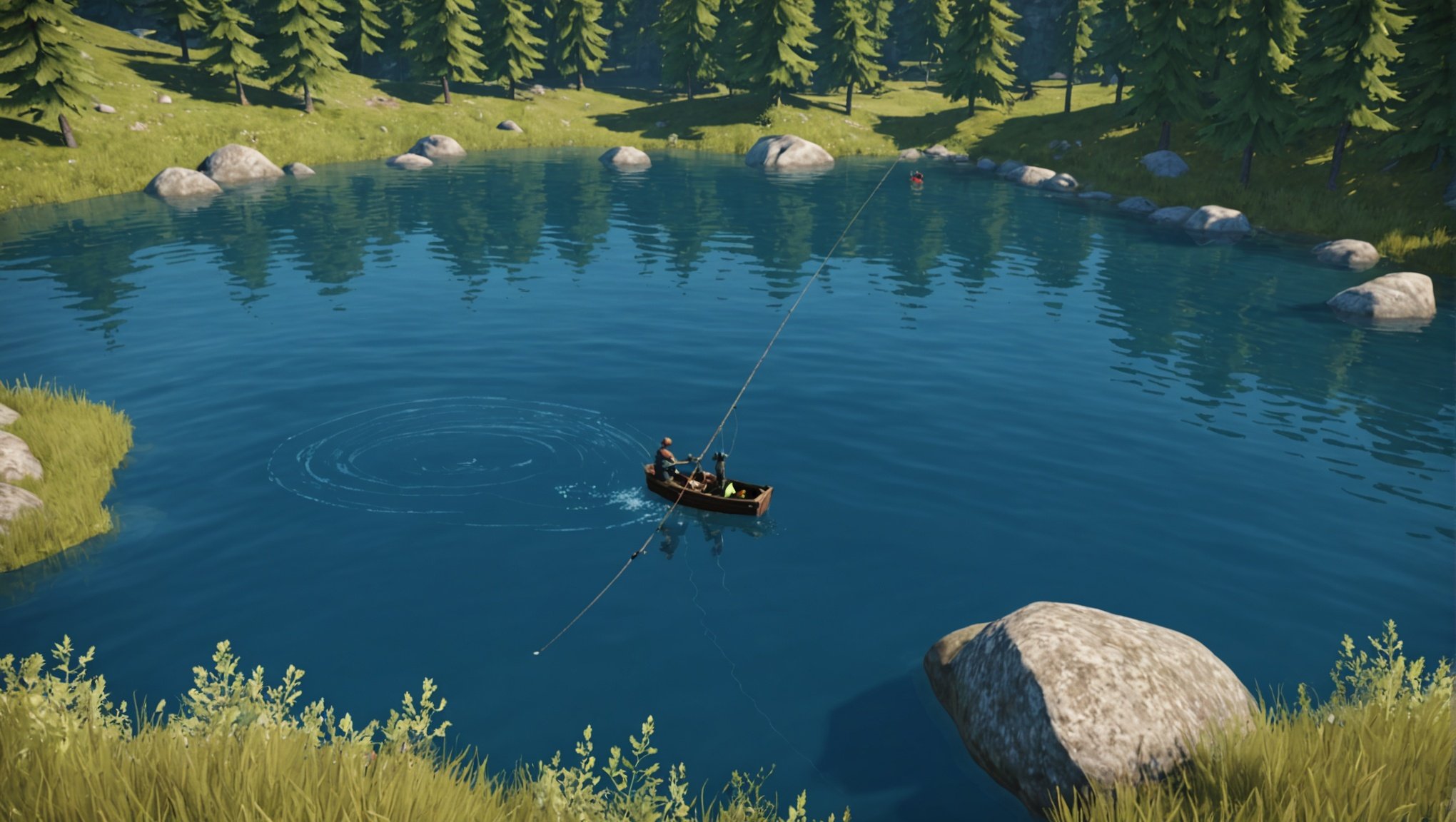The world of fishing simulation games has evolved significantly over the years. With advancements in technology, developers strive to create ever more immersive experiences. One of the most critical aspects of this is realistic water physics. But what are the challenges developers face in this endeavor? In this article, we delve into the complexities behind creating lifelike water physics in fishing simulation games.
The Importance of Water Physics in Fishing Simulations
When creating a fishing simulation game, one can’t overlook the significance of water physics. The movement of the water, the way it interacts with objects, and its overall appearance are vital in crafting an authentic experience. Accurate water physics not only enhance the realism but also affect gameplay mechanics, making it a cornerstone of any successful fishing simulation.
In the same genre : How can developers use machine learning to optimize in-game economic systems?
Water behaves in a unique manner—its fluidity, reflections, and interactions with the environment must be meticulously replicated. This is no easy feat, requiring both artistic skill and technical prowess. The goal is to mimic the natural complexities of water as closely as possible, which presents several challenges for developers.
For instance, how water reacts under different conditions—whether calm, turbulent, or somewhere in between—must be accurately depicted. Realistic water physics can make or break the believability of a fishing simulation game, setting it apart from the competition. This level of detail helps immerse players, making them feel as if they’re casting their lines in real-world bodies of water.
In the same genre : What are the key considerations for designing realistic NPC behaviors in sandbox games?
Technical Limitations and Computational Power
One of the primary challenges in creating realistic water physics is the sheer computational power required. Simulating water involves complex mathematical equations and algorithms. These calculations must be performed in real-time to ensure fluid and natural movement. However, the processing power needed to achieve this can be enormous.
Modern gaming consoles and computers have advanced significantly, but there’s still a limit to what they can handle. Developers must balance realism with performance, ensuring that the game runs smoothly without compromising on the quality of water physics. This often involves optimization techniques, such as simplifying certain aspects of the water simulation while maintaining visual fidelity.
Moreover, different platforms have varying hardware capabilities. What works on a high-end PC might not be feasible on a console or mobile device. Developers must create scalable solutions that deliver consistent water physics across all platforms. This adds another layer of complexity to the development process, requiring careful consideration and testing.
Another technical hurdle is the integration of water physics with other game mechanics. Fishing simulation games often feature dynamic environments with changing weather conditions and various water bodies. Ensuring that the water behaves realistically in all these scenarios demands meticulous planning and execution. Developers must account for factors such as wind, temperature, and water depth, all of which influence water movement and interaction.
Artistic and Visual Considerations
Beyond the technical aspects, creating realistic water physics also involves significant artistic and visual considerations. Water is not just a physical entity; it’s a visual element that can greatly enhance the aesthetic appeal of a game. Achieving the right look and feel for water requires a keen eye for detail and a thorough understanding of how light interacts with different water surfaces.
Developers must pay attention to elements such as transparency, reflections, and refractions. Water in a fishing simulation game needs to look convincing, whether it’s a crystal-clear lake or a murky river. This involves creating realistic textures and shaders, which can be a time-consuming process. Additionally, water bodies must seamlessly integrate with the surrounding environment, including shorelines, vegetation, and underwater terrain.
Lighting plays a crucial role in the visual representation of water. The way light reflects off the water’s surface, the play of shadows, and the appearance of underwater objects all contribute to the overall realism. Achieving this level of detail requires a combination of artistic skill and technical know-how. Developers often employ advanced rendering techniques to achieve the desired effect, but this can be challenging to implement and optimize.
Furthermore, water in fishing simulation games is rarely static. It needs to respond to various stimuli, such as the player’s actions, environmental changes, and interactions with objects. This dynamic behavior must be visually convincing, adding another layer of complexity to the development process. Realistic water physics, combined with lifelike visuals, create a more immersive and enjoyable gaming experience.
Gameplay Mechanics and Realism
Water physics directly impact gameplay mechanics in fishing simulation games. The way the water moves, its resistance, and its interaction with the fishing line all affect the player’s experience. Developers must ensure that these mechanics are both realistic and enjoyable, striking a balance between authenticity and playability.
For example, casting a fishing line involves several factors, including the weight of the lure, the force of the cast, and the resistance of the water. Realistic water physics must account for all these elements, providing a challenging yet rewarding experience for players. Additionally, the behavior of fish in the water is influenced by these physics, adding another layer of complexity to the simulation.
Developers must also consider the impact of environmental conditions on gameplay. Wind, rain, and currents all affect water movement and, consequently, fishing mechanics. Realistic water physics should reflect these changes, providing a dynamic and engaging experience. This requires a deep understanding of how water behaves in different scenarios and the ability to translate this knowledge into the game.
Moreover, the interaction between water and other objects, such as boats, buoys, and debris, must be accurately simulated. This adds to the realism and provides additional challenges for players. Implementing these mechanics requires careful planning and testing to ensure that they enhance rather than hinder the gameplay experience.
Realistic water physics can elevate a fishing simulation game, making it more immersive and enjoyable. However, achieving this level of detail involves addressing several challenges and balancing various factors, from technical limitations to artistic considerations and gameplay mechanics.
Future Directions and Innovations
The quest for realistic water physics in fishing simulation games is ongoing, with developers continuously exploring new techniques and technologies. Advancements in hardware and software offer exciting possibilities for the future, enabling even more lifelike simulations.
One area of innovation is the use of artificial intelligence (AI) and machine learning. These technologies can help developers create more accurate and dynamic water physics by learning from real-world data. AI algorithms can analyze how water behaves in different conditions and apply this knowledge to the game, providing a more realistic experience for players.
Additionally, procedural generation is becoming increasingly popular in game development. This technique involves creating water bodies and their behaviors algorithmically rather than manually. Procedural generation can produce more varied and natural-looking water, enhancing the realism of fishing simulation games. It also allows for greater flexibility and scalability, making it easier to create large and diverse game worlds.
Virtual reality (VR) and augmented reality (AR) are also shaping the future of fishing simulation games. These technologies offer new ways to experience and interact with water, providing a more immersive and engaging experience. Realistic water physics are crucial in these contexts, as they directly impact the sense of presence and immersion. Developers must continue to push the boundaries of what is possible, leveraging these technologies to create even more lifelike water simulations.
Furthermore, advancements in rendering techniques and graphics processing units (GPUs) are enabling more detailed and realistic water visuals. Real-time ray tracing, for example, can produce stunning reflections and refractions, enhancing the overall aesthetic appeal. As hardware becomes more powerful, developers can create more complex and realistic water physics without compromising performance.
Collaboration and knowledge-sharing within the game development community are also crucial for advancing water physics. Developers can learn from each other’s successes and challenges, adopting best practices and innovative techniques. This collective effort drives the industry forward, resulting in more realistic and immersive fishing simulation games.
Creating realistic water physics in fishing simulation games is a multifaceted challenge that requires a blend of technical expertise, artistic vision, and gameplay design. The importance of water physics in these games cannot be overstated, as it directly impacts realism, immersion, and player enjoyment.
Developers face numerous challenges, from technical limitations and computational power to artistic considerations and gameplay mechanics. Balancing these factors is essential to achieving lifelike water simulations that enhance the overall gaming experience.
Looking ahead, advancements in AI, procedural generation, VR/AR, and rendering techniques offer exciting possibilities for the future. By continuing to innovate and collaborate, developers can push the boundaries of what is possible, creating ever more realistic and immersive fishing simulation games.
In conclusion, the pursuit of realistic water physics is a testament to the dedication and creativity of game developers. As technology continues to evolve, we can expect even more stunning and lifelike water simulations in the fishing games of tomorrow.






